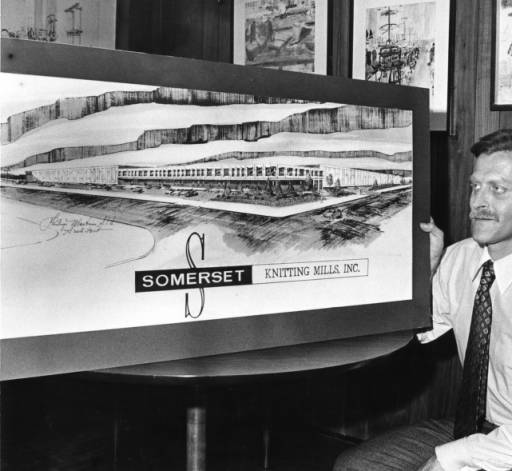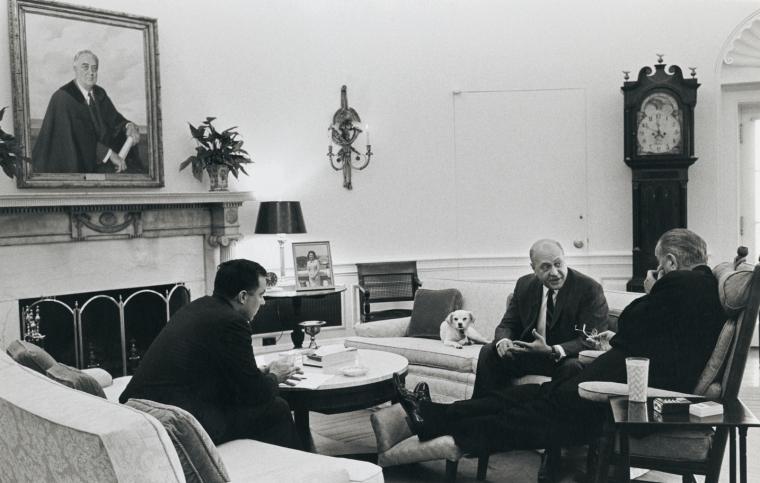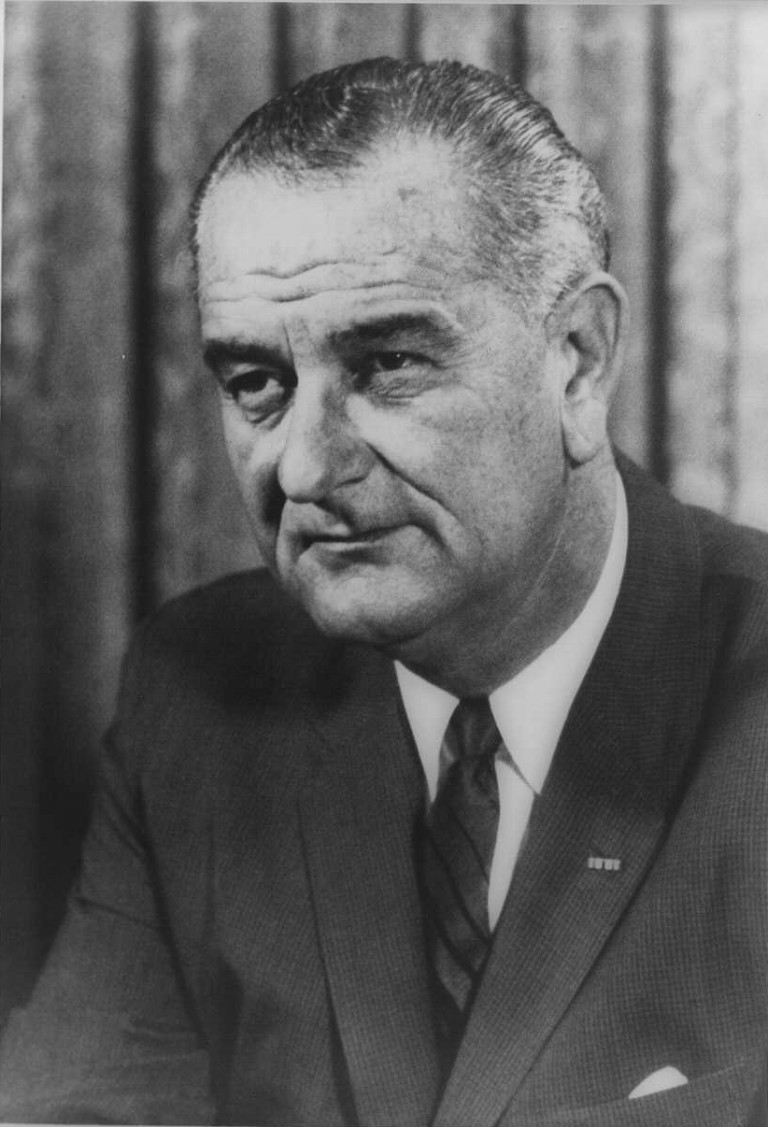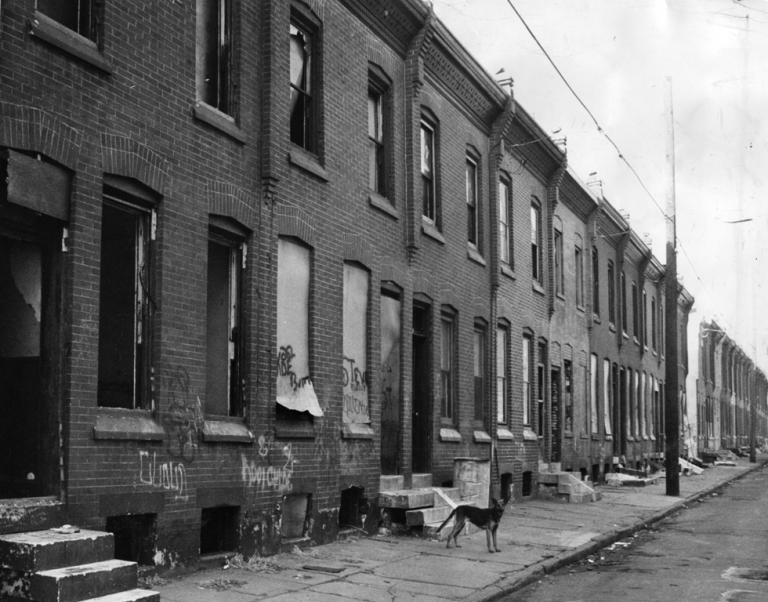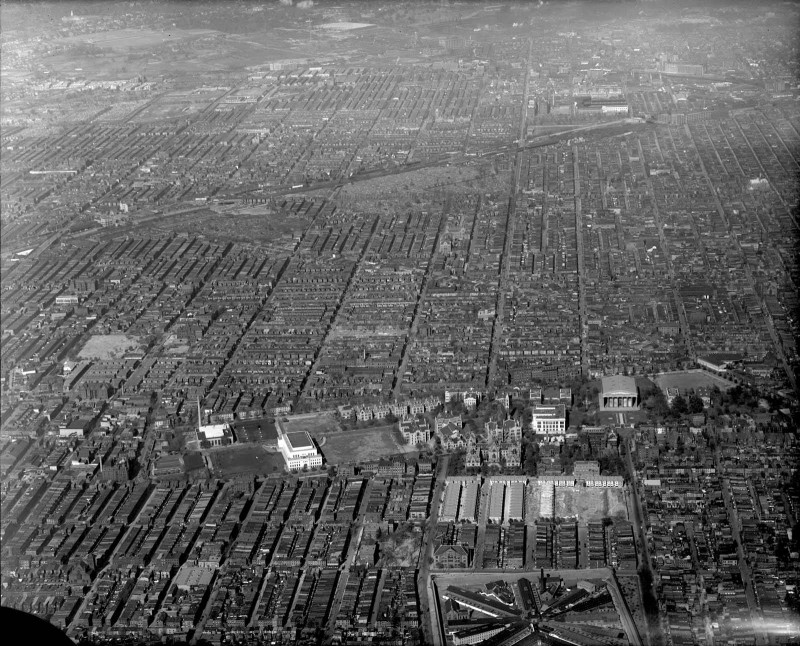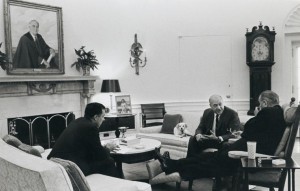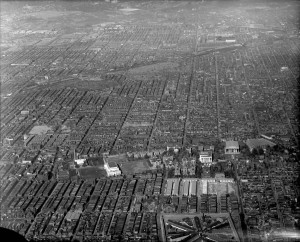Model Cities
Essay
The Model Cities program was the last major urban aid initiative of the Great Society domestic agenda of President Lyndon Johnson (1908-73). The legislation called for the coordination of federal services to redevelop the nation’s poorest and least-served urban communities. In 1967, North Philadelphia was designated for renewal under this program. Rather than serving to unify policies, however, the question of how to combine redevelopment with citizen participation exposed not only the inadequacies of the federal program but also the widening racial fault lines between white elected leaders and the city’s African American communities.
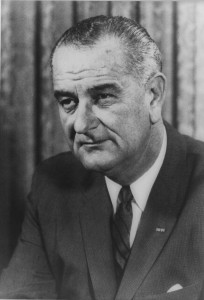
The national program’s origins can be traced to a memorandum that Walter Reuther (1907-70), president of the United Auto Workers Union, sent to President Johnson in May 1965. In bold language the labor leader encouraged the president to launch a comprehensive attack on the structural, social, and economic roots of poverty in six “demonstration” cities. The appeal’s rhetoric struck a chord with a president eager to build not just houses, but communities worthy of citizens who lived in his Great Society. In September, Johnson directed Robert Wood (1923-2005), secretary of the new Department of Housing and Urban Development (HUD), to chair a task force of industry executives, intellectuals, politicians, and administrators, to bring Reuther’s proposal to life.
Model Cities evolved in response to the concerns of urban mayors who had grown weary of the Community Action Programs (CAP) created by the Economic Opportunity Act of 1964. Charged with securing the “maximum feasible participation of the poor” in antipoverty programs, CAPs were largely run by private and nonprofit organizations. Relatively free from oversight and political control, they had the potential to become a new base for empowering poor and minority residents. Model Cities attempted to rectify two competing concerns. It sought to address African American dissatisfaction with federal urban renewal policy by instituting new comprehensive measures; yet, it failed to define clear lines of leadership and authority. Increasing racial tensions, sparked by riots that spread throughout American cities in the late 1960s, added a sense of urgency to the program’s design while the escalation of the wars in Southeast Asia drained funding for social programs, limiting room for political maneuvering.
In an effort to leverage congressional support, the task force expanded the program to sixty-six cities at a cost of $2.3 billion dollars. When the president unveiled the plan in January 1966, it quickly met resistance. Critics railed at the program’s cost and accused the president of catering to antiwar and African American demonstrators. Those sympathetic to the bill asserted it was too small to seriously address the challenges of the urban crisis. Prospects for the bill’s passage seemed grim, but Johnson intensified his lobbying effort to secure the necessary votes. In its final form Model Cities were created in 150 locations while the final appropriation was reduced to a mere $900 million dollars. When signed into law on November 3, the Demonstration Cities and Metropolitan Development Act of 1966 mandated a stringent timeline for submitting planning grants, but only vaguely outlined the terms for community participation, while asserting that local elected leaders would maintain ultimate authority.
Mayor Tate Lobbied for Model Cities
Several Philadelphians were influential in the passage of the Model Cities legislation. Mayor James Tate (1910-83), who also served as the president of the National League of Cities, lobbied for the bill’s passage. William Rafsky (1919-2001), vice president of the Old Philadelphia Development Corporation, served on the task force that drafted the legislation, while Democratic Congressman William Barrett (1896-1976) introduced the bill in the House of Representatives and then negotiated a compromise with Republican members of the Subcommittee on Housing to assure its passage. Confident that this insider participation would deliver a substantial share of the new appropriations to Philadelphia, Tate instructed city planners to concurrently draft the city’s grant request. As a result, Philadelphia became the only city to meet the program’s February 1967 deadline. However, in its haste it failed to consult any of the quarter million people who lived in the target neighborhood of North Philadelphia.
When the city finally sought community support, city activists, including Alvin Echols (b. 1931), expressed wariness and demanded guarantees that they would play a significant role in the planning process. Echols, director of the North City Congress, a coalition of fifty-eight local organizations, proposed the area’s community structures be incorporated as equal partners in the city’s planning process. Eager to comply with federal guidelines in a timely fashion, Tate agreed. On April 29, 1967, approximately 500 neighborhood representatives voted to form the Area Wide Council (AWC), a federation of 125 community organizations, as the community arm of the Model Cities program. William Meek (1921-95), an educator, social worker, and assistant director of the Wharton Centre, a North Philadelphia Settlement House, became the council’s first director.
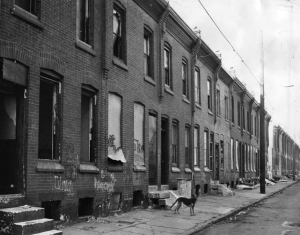
The AWC represented a diverse community through a network of sixteen neighborhood “hubs.” While this structure ensured the broad representation of community organizations and individuals, its slow-moving democratic nature proved incompatible with the requirements of professional planners. Factions quickly formed within the council as radicals pursued a confrontational strategy of applying pressure on City Hall with position papers and public demonstrations. As a result, the two sides developed a mercurial relationship punctuated by communication breakdowns and the replacement of the first three Model City administrators. Speaking at the Third International Black Power Conference, held in Philadelphia in the fall of 1968, Robert “Sonny” Carson (1936-2002) applauded the radicals’ efforts to plan from the bottom-up and resist the power of white politicians. AWC moderates worked tirelessly to preserve relationships with elected leaders, and in December 1968 successfully negotiated with the city’s Economic Development Unit to submit a proposal in accordance with HUD’s guidelines. This compromise plan, which called for creating seven community corporations (four controlled by the AWC), represented the high point in the city and council’s relationship
The council’s tenuous position was revealed in 1969 when Goldie Watson (1909-94) was named the fourth Model Cities administrator. A close ally of Mayor Tate, Watson was a seasoned political operative and a resident of North Philadelphia. A teacher and small business owner with deep roots in the community, she challenged the AWC’s position as a representative voice. The election of Richard Nixon (1913-94) to the presidency that same year dramatically altered the operation of federal anti-poverty programs. Once a champion of citizen participation, HUD reversed course and mandated that federal funds be channeled through established city institutions. This shift in policy dovetailed neatly with Watson’s management of Model Cities. In an effort to consolidate her position, she consigned the AWC to an advisory role, diminished its representation in the community corporations, reduced its budget, and implemented new policies and bookkeeping procedures to curb the activism of its increasingly fractured and radical membership.
Area Wide Council Files Suit
Convinced that Watson aimed to undermine the role of citizen participation, William Meek rejected the new structure and protested Tate and Watson’s undemocratic power grab. The AWC filed suit in August 1969 accusing the city of violating provisions of the Demonstration Cities Act by not including a representative community voice in the planning and implementation process. The refusal of hardliners to negotiate with the city proved costly as the AWC lost vital public support. When the case was dismissed in November 1969, Watson seized the advantage, announcing the formation of a new interim citizen’s committee that included nineteen former AWC members. With its reputation in ruins, and its membership depleted, Meek and the AWC continued to fight. A protracted legal battle ensued. When the AWC emerged victorious in July 1970, it could claim only a pyrrhic victory. The legal battle to ensure community participation left the council in ruins while the city continued to implement the Model Cities program without the council’s input.
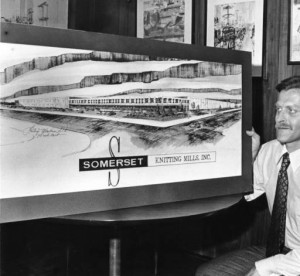
Watson and her associates molded the Model Cities program into a tool of political patronage. With some exceptions, their efforts were typically small in scale, exorbitant in cost, and failed to involve the community in any significant way. By 1972, these practices provoked charges of widespread corruption and nepotism prompting HUD to threaten the termination of all funding unless significant changes were made. Seeking to retain federal monies, the recently elected mayor, Frank Rizzo (1920-91), initiated new policies and directed the Philadelphia Industrial Development Corporation (PIDC) to lead a reorganization of the Model Cities program. Under PIDC’s direction, Model Cities concluded its efforts to develop Black capitalism in favor of a new strategy that supported and retained existing businesses. The PIDC-Model Cities partnership financed the relocation of the Somerset Knitting Mills Company, saving 400 jobs, the first in a series of inner-city industrial development projects.
In 1974, after nearly eight years of halting progress, this idealistic, ambitious, and contradictory federal policy was discontinued and replaced with a system of community development block grants. Critics and supporters alike agreed that funding was spread too thin to be effective. In some communities Model Cities launched a new era of identity politics and opened avenues for minority leaders to pursue careers in public service. In Philadelphia, minority residents who had been historically denied access to the power and resources to shape the future of their community, found it difficult to penetrate the existing white power structure. While Black capitalism received a modest boost, the program’s lofty promises were compromised by hardened racial lines, ineffective leadership, greed, mismanagement, poor supervision, ineffective internal controls, and poorly delineated lines of authority. These internecine battles took center stage, leaving the vision of comprehensive urban renewal a casualty in the ongoing struggle between City Hall and advocates of community control.
Jason T. Bartlett holds a Ph.D. in history from Temple University. His dissertation, “The Politics of Community Development: A History of the Bedford-Stuyvesant Restoration Corporation,” examines the fifty-year history of the nation’s first comprehensive community development corporation. (Author information current at time of publication.)
Copyright 2016, Rutgers University
